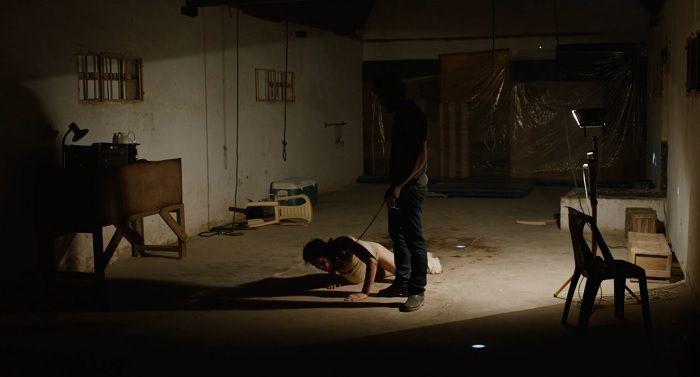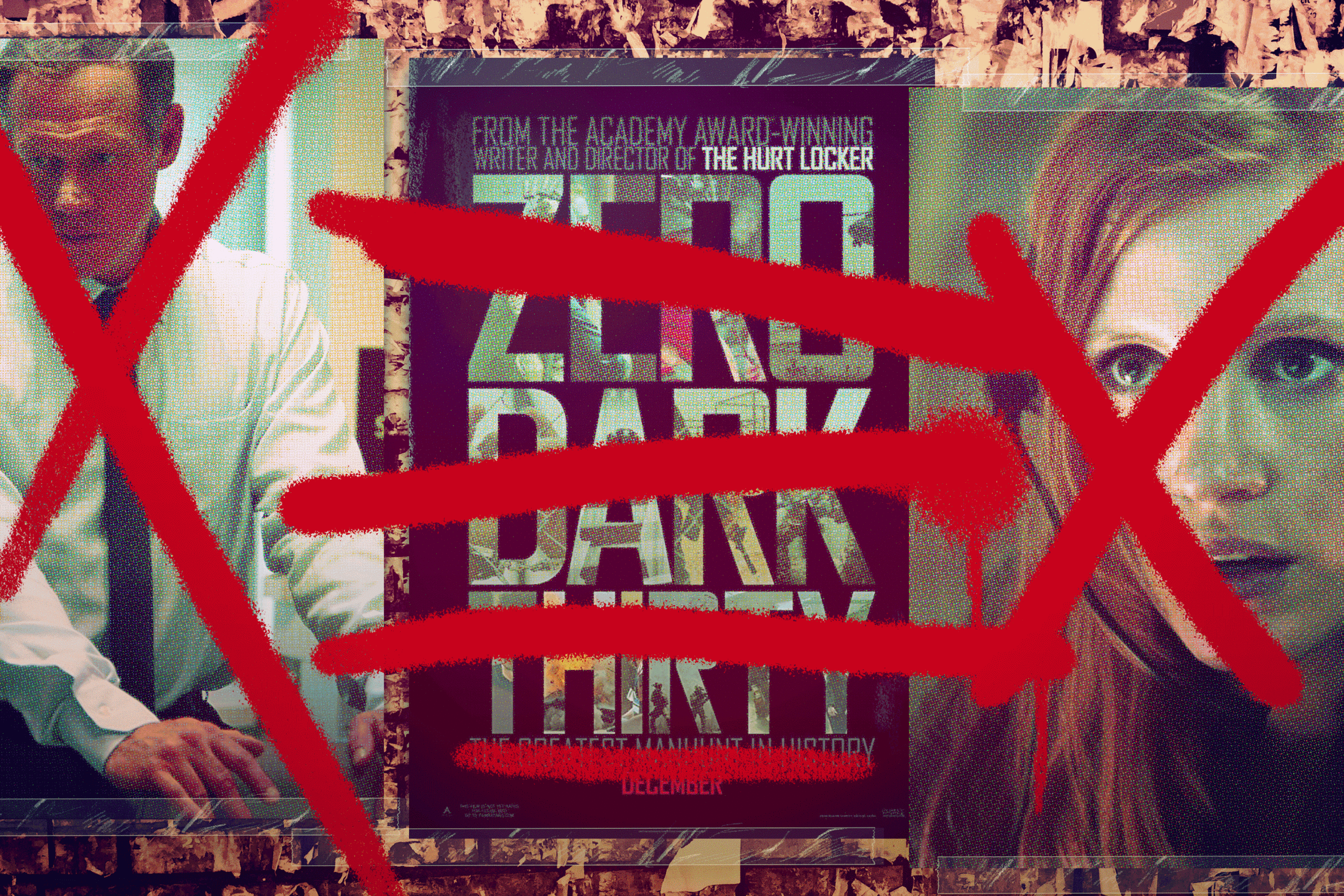Reexamining the ‘Zero Dark Thirty’ Backlash Cycle, Five Years Later
Kathryn Bigelow’s Oscar-nominated film about the hunt for bin Laden was scrutinized for its politics, but it’s the personal narrative that is worth rememberingIn 2015, Seymour Hersh published “The Killing of Osama bin Laden” in the London Review of Books. The title couldn’t be more straightforward. It is, on its face, a rigorous, uncannily meticulous account of the storied night raid, led by SEAL Team 6, on the Abbottabad compound in Pakistan, which culminated in a violent end to the 10-year hunt for Osama bin Laden.
It’s the kind of account a reporter can only properly write long after the dust has settled on the event itself. Hollywood had already made multiple movies out of the story, including Kathryn Bigelow’s prestigious, expensive, Oscar-nominated Zero Dark Thirty, and the political machine had long since given it the requisite spin. This history is the pretext of Hersh’s reporting, which is as much a procedural account of the pivots in planning and intelligence leading up to the raid as it is a reckoning with the false fronts of a convenient, misleading political legend. “The killing was the high point of Obama’s first term, and a major factor in his re-election,” wrote Hersh. Much of what we thought we knew about the event turned out, according to Hersh and the retired senior U.S. official who provided the backbone of much of his story, to be false. “The White House’s story might have been written by Lewis Carroll.”
Some time after running Hersh’s piece, LRB ran a letter from a man named Francis X. Archibald, an octogenarian former Democratic politician from South Carolina:
Regarding Seymour Hersh’s story, the facts are these:
1. Osama bin Laden orchestrated the 9/11 terrorist attacks on America.
2. The CIA found out where he was living.
3. U.S. Navy SEALs killed him.End of story. Most Americans don’t give a flying f**k about the details of the venture.
In short: No one cares. Extended cut: We killed him. What else matters? The LRB’s editors responded that “Seymour Hersh’s piece [has] received more than 2 million page-views online”—in other words, Try again. Curiously, the following year, on the fifth anniversary of the Abbottabad raid, the CIA’s verified Twitter account live-tweeted the operation “as if it were happening today”—as if Hersh’s reporting hadn’t blown the lid off. The time-stamped tweets, supplemented with pictures of Obama and his furrow-browed staff watching the raid live from the Situation Room, received thousands of favorites and retweets. But they received even more replies, many of them deeply critical.
It appears many people do care to get the story of Osama bin Laden’s killing right, in part because, as Hersh and others have reminded us, the so-called War on Terror didn’t end with that victory, as was implicitly promised. The CIA’s lame Twitter reenactment was a reminder of the U.S. government’s predilection for making do with its broken promises. But there was no distracting from the fact the war had, to that point, been raging for 15 years—and that culture, writ large, was too willing to buy into the party line.
A movie like Zero Dark Thirty went a long way toward establishing that party line, in the first place. When it was released late in 2012, debates raged as to the meaning, purpose, accuracy, and danger of the movie, and of Hollywood retellings of recent political history more broadly. Was Zero Dark Thirty a nuanced apologia or merely a reckless one? (Its status as a political defense was generally taken for granted.) Suddenly, everybody was a sociopolitically minded movie critic. We’ve tended to think of this kind of pushback as an essential indicator of the now-common Oscar backlash cycle. Even before it was an Oscar nominee, Zero Dark Thirty was clearly an Oscar movie, having racked up strong reviews and honors from critics’ groups paired with the legacy success of its director, who in 2009, with The Hurt Locker, became the first woman to direct a movie honored with Best Picture at the Academy Awards. Other Oscar-nominated films made since 2012, including La La Land and Three Billboards Outside Ebbing, Missouri, have been subject to similar levels of scrutiny—albeit with lower stakes.
In the case of Zero Dark Thirty, the debate centered around the role movies play in our culture and their responsibility to the public, accordingly. “Zero Dark Thirty is a gorgeously-shot, two-hour ad for keeping intelligence agents who committed crimes against Guantánamo prisoners out of jail,” wrote Naomi Wolf in a first-person letter to Bigelow published in The Guardian. “It makes heroes and heroines out of people who committed violent crimes against other people based on their race–something that has historical precedent.” She likened Bigelow to Nazi propagandist Leni Riefenstahl, a precisely chosen comparison: Reifenstahl is as much remembered for being an innovator of cinema as she is an apologist for reprehensible politics. Glenn Greenwald, too, had his say, claiming that Bigelow’s film “uncritically presents as fact the highly self-serving, and factually false, claims by the CIA that its torture techniques were crucial in finding bin Laden”—a fairly confident read from someone who admits, in the same essay, that he had not seen the movie. Michael Wolff—yes, that Michael Wolff—called the film “Homeland without the character quirks,” suggesting that despite its desire to appear journalistic, the movie tries to get away with claims and implications that a “nonfiction writer couldn’t do,” as if Zero Dark Thirty’s ostensible realism were the same as a claim to being nonfiction.
But much of the debate about Zero Dark Thirty was more substantial. It had been revealed that the CIA had willingly cooperated and even collaborated with Bigelow and her screenwriting partner, Mark Boal, in the making of the movie. This news dropped thanks to a Freedom of Information Act request on behalf of the conservative group Judicial Watch, which acquired emails between Pentagon and White House officials discussing their involvement with the project. News that the government had supplied Boal and Bigelow with information about the raid was taken to be, at best, a sign that Boal and Bigelow were necessarily beholden to the government’s version of events, and at worst, that Zero Dark Thirty was in fact altogether the government’s movie. It didn’t help that Boal is as much a journalist as a screenwriter, meaning that his script would automatically, even if unfairly, have the veneer of reported truth, nor did it help that the filmmakers themselves described the movie as a “hybrid of the filmic and the journalistic,” suggesting that its duty was not only to recount the events leading up the Abbottabad raid but, in the tradition of investigative reporting, to also reveal and advance new details about it.
So much of our misfortune as a nation can be attributed to the cottage industry of political narrative that it’s no wonder we can’t seem to wrestle with Zero Dark Thirty strictly on its own terms, as merely a movie. On the other hand, taking Zero Dark Thirty on its own terms means making sense of its ideology. No one who’d lived through Vietnam, to name one example, or who’d gotten a good education on any American war could be naive to the power of narrativized visual stories to shape national understanding, or to pull the wool over our eyes. Zero Dark Thirty was released just 19 months after the raid in Pakistan: It waded knowingly into a fraught slice of history just as that history was taking shape, and played a role, however hard to measure, in molding public understanding. Response to Zero Dark Thirty became an occasion to wrestle with the American myth-making machine, via Hollywood. It’d be difficult to claim this is unfair.

But it’s also difficult to take seriously the argument that representation is endorsement. I keep coming back to Glenn Greenwald’s provocative parenthetical disclaimer: “I have not seen this film and thus am obviously not purporting to review it; I am, instead, writing about the reaction to the film: the way in which its fabrications about the benefits of torture seem to be no impediment to its being adored and celebrated.” How can you detail a movie’s fabrications—which number plenty in even movies that strive for accuracy, being that they’re movies—without seeing it? Supplement this with Wolff’s hand-wringing over Bigelow’s film violating the standards of journalism and what you have is a conversation that takes Hollywood images at their word, and evaluates them accordingly.
Then again, let’s be honest: Most of us consume movies (and TV shows, and television news, the galaxy of recorded images on the internet, and other specifically visual forms of media) this way, and despite the many chances the 21st century has given us to improve upon this widespread image illiteracy, we seem stuck in our ways. To pose an entire argument against Zero Dark Thirty without seeing it, or even to see it while tethered to our own strict political predispositions, makes it difficult to afford nuance, not only to the images onscreen, but to what happens between those images, or outside of them, or to what happens when a smart filmmaker purposefully places those images in contradiction to each other. No movie is a blankly realistic representation of what it’s showing you onscreen, not even one meant to seem “journalistic”; every cut, every detail, every elision of time or space is a break with reality. Zero Dark Thirty points us somewhere a little thornier than an easy endorsement of torture. On the other hand, it isn’t an indictment. That’s the central difficulty of the movie.
The enduring fascination of Zero Dark Thirty, and a key to what makes its politics so strange, is that it doesn’t see its most dangerous ideas as matters of politics: It sees them as matters of procedure and personal might. In sly ways worthy of more discussion than they’ve gotten, the movie makes the hunt for bin Laden feel personal, not political. That attitude, rather than a strictly pro-torture one, is what I’ve lately found myself wrestling with. The film starts off by asking us to endure long, brutally graphic scenes of torture at black sites in Pakistan and elsewhere, scenes premised on thinking of enhanced interrogation as, at base, an exchange. “When you lie to me,” says an operative named Dan (Jason Clarke), “I hurt you.” Later: “Partial information will be treated as a lie.” What Dan says is borne out in his treatment of a detainee named Ammar (Reda Kateb), who is, over the course of more than a year, waterboarded, beaten, interrogated while forced to stand and sit in stress positions, and humiliated by being stripped nude in front of a woman. That woman is Maya (Jessica Chastain), the central character of the movie, who’s based on a real-life active agent, and whose desire to kill bin Laden on her own terms eventually overwhelms the movie.
Initially, these abject, brutal early scenes feel like straightforward retribution for the 9/11 attacks, which open the movie: Bigelow bombards us with a nauseating mix of distraught calls to the police and loved ones from people in the towers and on the planes, played over a blank, black screen before the story starts. Torture immediately follows. Then the scene of a terrorist attack—the 2004 Khobar massacre—then more ostensible gathering of intel from detainees, then another attack—the 2005 Tavistock Square bus bombing, which was one of four bombs to go off in London that day—then more gathering of information. The pattern continues just so, as if to suggest that the gathering of intel via torture is frustrated by continued failure: It doesn’t save anyone and gets the CIA nowhere. For Maya, the central failure is in her inability to nail down one of Osama bin Laden’s supposed couriers, Abu Ahmed al-Kuwaiti. Her eventual success in tracking this man is, it’s true, partly the result of intel culled from years of torturing detainees. But the extent to which torture “works” in this movie is tempered with all the incidents in which it doesn’t—including in one of the film’s most dramatic scenes, a reenactment of the 2009 bombing at Camp Chapman which, in the movie’s rendering, kills one of Maya’s closest colleagues.

This, plus Maya’s immediate experiences with being attacked, are what make the movie shift away from being “about the CIA” toward being about one agent, and her own mission. By the time Maya is really on bin Laden’s tail, torture—to hear the CIA agents in the movie tell it, anyway—is verboten. Obama has forsworn it; it just doesn’t play well on the world stage. Terrorist violence, however, has long since crept into Maya’s life. It is no longer a news bulletin or a historical abstraction. She’s lost friends; she herself has survived a bombing and a barrage of bullets. And she’s soaked it all up and thrown it back into her work. By the time all of this happens, the rhythmic back and forth between interrogation and reenactment has been broken, and all that is left is Maya, and her hunger. The hunt for bin Laden no longer feels like the ritualized misexecution of overwrought interrogation tactics. It is powered, instead, by a singular thirst for personal payback, proffered by a woman who, as the movie sees it, practically has to force the country’s hand to get what she wants. President Obama, who hovers just outside the movie, never fully materializing, seems halfway reluctant. Maya is a zealot, by comparison.
Boal’s script seems unambiguous on this front. Maya is given lines like “I’m gonna kill bin Laden” and “A lot of my friends died trying to do this. I believe I was spared so I could finish the job.” To the men of SEAL Team 6, describing the Abbottabad compound, she says, “Bin Laden is there. And you’re gonna kill him for me.” She’s a character defined by the singularity of her vision and effort, which makes it hard to see her as a metaphor for the rest of us. Maya is Maya. The workplace drama of it all, with Maya reminding her boss every day that they still haven’t killed bin Laden, makes it feel like a Sisyphean one-woman effort, a fight to nudge the entire presidential administration into action through persistence and smarts. The administration, which still has the Iraq WMD debacle in its rearview, is comparatively muted; you get the sense from this movie that, so far as Maya is concerned, being resistant to torture and action on the bin Laden front is a sign of over-cautiousness, and that over-cautiousness is what puts American lives in danger.
But again, what’s fascinating is that the government’s cautiousness frustrates not only a bigger political need, but also Maya’s ability to get payback. Rooting for Maya entails rooting for the apparatus of the state—the practice of torture, above all. What’s unclear is whether, independent of Maya, the movie would feel so aligned with the CIA’s methods that it’d still depict them with such care were she, or a character with her display of might, not here. It reminds me of one of the film’s eeriest images, in the offices of the CIA, in which Maya’s shadow gets cast across a framed American flag. It’s a single shadow: Just hers. Even as you sense it’s a shadow that hangs over the entirety of the nation, the movie doesn’t make it easy to imagine “the nation”: All it gives us is her.
None of this is to say that Zero Dark Thirty doesn’t tempt misreads on the part of the audience—if anything, the opposite. The movie is only too eager to confound easy explanations: That is what makes it formidable, powerful, and prone to problematic and complex interpretations, of the sort that one-note backlash debates don’t really have the capacity to generate. Nothing in the movie sums this up as neatly as its final scene. After bin Laden is killed, Maya boards a military plane and prepares to travel back home. She is alone. Chastain, in a fine display of all the weary moral uncertainty undergirding the movie, is overtaken by a blank, exhausted expression. It closes the movie. You might read that last image as, “Is it worth it?” Certainly Maya doesn’t look as relieved as you might expect, and in that regard, she is the rest of us, over time. The war on terror didn’t end with this event. But what remains fascinating is that this is a question pitched, again, toward the individual. Is it worth it for whom—Maya, or the country? The United States falls out of view in the final moments of Zero Dark Thirty. The Abbottabad compound disappears, the soldiers disappear, CIA procedure disappears. Maya is all that’s left.
